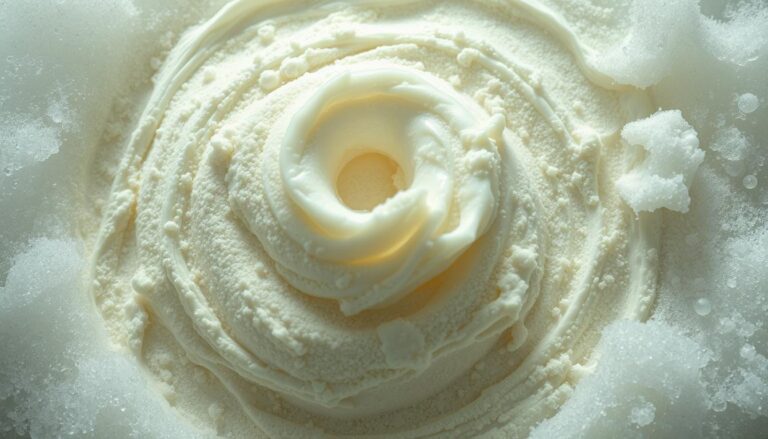Handling a Broken Tooth When Dentist Unavailable

One in five dental emergencies in the United States involves cracked or broken teeth. This shows how common it is. What if you can’t see a dentist right away for a broken tooth? This worry often comes up when urgent care is not available.
Early steps can help avoid infection or nerve problems. This is important.
Protecting a damaged tooth quickly can lessen pain and keep your mouth healthy. Actions like rinsing your mouth and covering the exposed area help. Knowing what to do can ease your worries and protect your teeth.
Key Takeaways
- Immediate cleaning of a broken tooth reduces bacteria.
- Stabilizing the tooth helps protect the exposed pulp.
- OTC medications ease discomfort when care is delayed.
- Mouth rinses and gentle handling reduce infection risks.
- Seeking emergency dental services remains vital.
Understanding the Immediate Risks of a Broken Tooth
A broken tooth is a serious issue for your mouth. Even small chips can lead to big problems. It’s important to get it checked out quickly to avoid bigger issues.
Types of Broken Teeth and Their Complications
Small cracks might just scratch the enamel. But bigger breaks can hurt the nerve and make the tooth unstable. Knowing about broken tooth emergency options can help fix these problems early.
Our knowledge is growing, helping us protect our teeth better.
Potential for Infection and Pain
Exposed areas can attract bad bacteria. This can cause pain and swelling in your gums. If not treated, it could lead to bigger health problems.
When to Seek Emergency Care
If your tooth hurts a lot or bleeds, see a dentist fast. They can offer broken tooth emergency options to prevent long-term damage. Look out for severe pain or fever, as these are signs you need help right away.
Initial Steps to Take for a Broken Tooth
Acting quickly is key when a tooth breaks. Studies show that fast action stops bacteria from spreading and eases pain. These steps are the first line of defense until a dentist can help further.
Rinse Your Mouth with Warm Salt Water
Using a saline solution helps remove dirt. Warm water also calms the area, helping to prevent infection.
Control Bleeding with Gauze or Tea Bags
Apply gentle pressure with clean gauze or a damp tea bag. Tea’s tannins can help the blood clot and protect gums.
Avoid Using the Affected Side for Chewing
Don’t put too much pressure on the broken tooth. Eating soft foods and being careful with your bite helps it heal. This is important for taking care of a broken tooth.
Pain Management Techniques at Home
Toothaches can really mess up your day. This guide shows you how to ease the pain when you can’t see a dentist right away. These steps are trusted by many to help with tooth pain and are backed by science.
Over-the-Counter Pain Relievers
Medicines like ibuprofen or acetaminophen can ease the pain. Always check the dosage on the label or ask a pharmacist. They help reduce swelling and offer quick relief.
Cold Compress Application
Applying a cold pack to your jaw can help. Use it for 15 minutes, then take a 15-minute break. For more tips, check out this resource on handling tooth issues.
Natural Remedies to Alleviate Discomfort
Some people find relief in rinsing with warm saltwater. Others use clove oil for its soothing effect. While these natural remedies can help, they shouldn’t replace a dentist’s care.
| Method | Key Benefit | Suggested Frequency |
|---|---|---|
| OTC Medication | Reduces pain and swelling | Follow label instructions |
| Cold Compress | Lowers localized inflammation | 15 minutes on/off |
| Natural Remedies | Offers mild, soothing effects | As needed until professional care |
Diet Modifications After a Tooth Break
When a tooth is injured, finding the right food can be tough. Many people see choosing soft foods as a way to help their tooth heal. These foods are easier to chew and help reduce pain and discomfort.

Look for foods that are easy to chew but packed with nutrients. This way, you get the vitamins and minerals you need without causing pain. It also helps keep your jaw comfortable.
Soft Foods to Include in Your Diet
These foods are gentle on your teeth and help keep your mouth healthy:
- Mashed potatoes and scrambled eggs
- Applesauce and yogurt
- Cooked vegetables and blended soups
Foods to Avoid Until You See a Dentist
Some foods can make things worse or even break your tooth further. Avoid these:
- Hard candies and ice
- Sticky treats and crunchy nuts
- Tough meats that require excessive jaw force
Following these dietary tips is a common advice from dentists. It helps avoid irritation and prevents more problems. By eating soft foods, you can ease your discomfort and get ready for a dentist visit.
Temporary Solutions You Can Consider
If you have a chipped or jagged tooth, you might need something to hold you over until you see a dentist. These quick fixes can help protect your tooth and keep it from getting worse. Knowing what to do and what not to do can help you avoid making things worse.
Dental Wax for Protection
Dental wax is a soft barrier that keeps sharp edges from rubbing against your gums. It can slow down further damage and help with pain when you eat or talk. Make sure to pick a wax that’s safe for your mouth.
Using Clove Oil for Temporary Relief
Clove oil is known for its mild numbing effect, which can give you some relief. Apply it gently to the sore area to ease the pain. This is a safe way to take care of your tooth until you can see a dentist.
Dental Cement as a Short-Term Fix
Some people use dental cement to hold a tooth together if a piece breaks off. It’s a quick fix that doesn’t last forever. But, be careful not to try to fix your tooth yourself. Avoid using regular glue and wait to see a dentist as soon as you can.
Recognizing Signs That Require Immediate Care
Spotting severe symptoms early can stop long-term problems. Sometimes, a cracked tooth might only cause mild pain. But other times, the situation can get worse, making it critical to watch out for signs.
According to the American Dental Association, “Immediate evaluation can often preserve natural tooth structure and reduce complications.”
Severe Pain that Doesn’t Subside
Constant pain could mean the pulp is involved. Cold or hot foods and hard bites can make it worse. It’s important to get help quickly to avoid more damage.
Visible Signs of Infection or Swelling
Pus or swelling means bacteria have invaded. Fever or chills could be signs of a fast-growing infection. Not treating it can lead to nerve damage and more serious problems.
Difficulty in Breathing or Swallowing
Having trouble breathing might mean an infection in the tissues around the tooth. It’s a sign to see a dentist right away. Looking at a dental emergency resource can help you know what to do.
| Sign | Possible Consequence |
|---|---|
| Persistent Pain | Pulp Damage |
| Swelling | Abscess Formation |
| Breathing Trouble | Airway Compromise |
Maintaining Oral Hygiene with a Broken Tooth
Even with a broken tooth, keeping your mouth clean is key. Gently clean and rinse to get rid of bacteria. This helps prevent new infections and keeps your gums healthy.
How to Clean the Affected Area Safely
Use a soft-bristled toothbrush for small circles. This avoids putting too much pressure on the tooth. Warm salt water can also help by removing food bits.
Importance of Continuing Your Oral Hygiene Routine
Don’t skip brushing or flossing. This can lead to plaque and more pain. Keep up with your routine to reduce swelling and pain.
Using Antiseptic Mouthwash
Go for an alcohol-free mouthwash to soothe your mouth. It fights off bad bacteria and keeps your mouth balanced. Check out this resource for more on healing with mouthwash.
| Essential Supplies | Usage Notes |
|---|---|
| Soft Toothbrush | Protects enamel while cleaning |
| Saltwater Rinse | Reduces the risk of infection |
| Antiseptic Mouthwash | Targets hard-to-reach bacteria |
Preventative Measures for Future Dental Issues
Dentists stress the importance of being proactive for good oral health. Catching problems early can stop them from turning into painful issues. Regular check-ups help keep teeth strong and gums healthy.
Regular Dental Check-Ups
Professional exams find problems before they get worse. Regular visits let hygienists clean teeth and spot decay early. X-rays show hidden damage, leading to quick fixes.
Proper Oral Hygiene Practices
Brushing and flossing daily keeps teeth safe from bacteria. Using fluoride products helps prevent decay. Cleaning around dental work keeps it in good shape.
Choosing Foods Wisely
Hard foods can chip teeth. Avoiding sweets and crunchy foods helps. Eating right keeps gums and teeth healthy, saving money on dental care.
| Preventative Step | Suggested Frequency |
|---|---|
| Dental Examination | Every 6 Months |
| Professional Cleaning | Twice a Year |
| Enamel Protection Products | Daily Use |
| Mindful Diet Choices | Ongoing |
Understanding Different Types of Dental Emergencies
When you notice a chipped or cracked tooth, it’s hard to know if you need urgent care. Some small cracks might heal on their own. But, a broken tooth with deep damage is a serious issue.
A broken molar is a big problem. It can cause pain and discomfort for a long time. This is because nerves can get exposed.

Experts say to see a dentist if your symptoms get worse. A visit to dental repair services can help figure out how bad the injury is. This shows the importance of getting help quickly.
Distinguishing Between Minor and Major Issues
Small cracks might not be as big of a deal. But, if a chip is sharp or causes pressure, it’s worth checking. Deeper breaks that bleed or expose the pulp are emergencies.
How to Assess the Urgency of Your Situation
Watch how your pain, bleeding, or swelling change. If bleeding won’t stop or pain is really bad, you need help fast. Keeping track of your symptoms helps doctors know what to do next.
Finding a Dentist When Yours Isn’t Available
Unexpected situations can leave you without your usual dentist. But, there are resources to help quickly. They can reduce pain and prevent bigger problems.
If you can’t reach your dentist, look for emergency clinics. They offer urgent care, even for walk-ins. A simple call or online search can find a place near you.
Searching for Emergency Dental Services
Many places have emergency dental services open late. They can help with severe pain, chipped teeth, or infections. It’s wise to call ahead to check if they’re open.
This can save you time and get you help faster.
Utilizing Telehealth Options for Guidance
Telehealth lets you talk to dentists online. They can give advice on broken teeth and pain. They might suggest home remedies or tell you to see a dentist in person.
Contacting Local Dental Schools for Help
Dental schools can also help. They offer care at lower costs. This is because students are learning under professional supervision.
These programs follow strict rules. They ensure you get the right care while students gain experience.
Financial Considerations for Emergency Dental Care
Emergency dental care can be unexpected and costly. If you have insurance, check your policy details early. Knowing what’s covered can ease stress during emergencies. A quick call or online check can clarify your coverage.
Understanding Insurance Coverage for Emergencies
Insurance policies vary in what they cover. Some only pay for basic treatments, while others cover more. Reviewing your policy can help you understand any extra costs you might face. You can find summaries online or by contacting your insurance company.
Exploring Payment Plans or Financing Options
Many clinics, like Apple Tree Dental, offer payment plans. These plans help avoid large bills. Talking to a billing coordinator can reveal options that fit your budget. This way, you can afford urgent care.
Community Resources for Affordable Care
If you don’t have insurance, local health departments and nonprofits offer help. They use sliding-scale fees. Community clinics and social service agencies can also guide you to affordable dental care.
| Resource | Potential Benefit |
|---|---|
| Insurance Portals | Coverage Details and Out-of-Pocket Estimates |
| Payment Plan Services | Flexible Monthly Installments |
| Community Clinics | Sliding-Scale or Low-Cost Options |
Educating Yourself About Tooth Repair Options
Cracked or chipped teeth can cause pain and other problems. Learning about treatment options helps you feel more at ease when talking to dentists. You can start by looking at this guide on broken teeth and what happens next.
Many people wonder if small tooth cracks can heal on their own. While tiny cracks might seem minor, bigger ones need quick attention. Knowing about different treatments helps you talk to dentists about what’s best for you.
Types of Treatments for Broken Teeth
Dentists have several options for fixing broken teeth. For small cracks, they might use bonding materials to seal them. For bigger problems, crowns can help by covering and protecting the tooth.
If the tooth’s pulp gets infected, a root canal is needed. This removes the infected tissue to save the tooth.
Discussing Crown, Filling, or Extraction Options
If the damage is small, a filling can fix it. But for bigger issues, a crown might be the solution. It helps restore the tooth’s shape and function.
For severe cases, the tooth might need to be removed. After that, you might get an implant or a bridge. These help you chew and bite properly again.
Learning from the Experience: Preventing Future Breaks
Dental fractures often show hidden risks. They make people think about how to protect their teeth. Eating right and keeping your mouth clean are key. Also, making your enamel stronger helps it handle shocks better.
Tips for Strengthening Your Teeth
Enamel can wear down if not cared for. Here are ways to keep it strong:
- Eat foods rich in calcium and vitamins
- Brush well with fluoride toothpaste
- Rinse with an antiseptic to fight bacteria
Habits to Avoid That Could Lead to Breaks
Some actions can make your teeth more likely to break. Chewing on ice or biting hard objects weakens them. Hard items can make small cracks bigger. Also, using your teeth to cut or pry is dangerous.
Importance of Mouthguards for Sports
Playing sports can hurt your teeth. A custom mouthguard protects your teeth from impacts. It helps prevent serious damage. Read about common ways to accidentally break a tooth and how to stay safe.
When to Schedule a Follow-Up Appointment
A broken tooth might seem okay after you try to fix it at home. But, seeing a dentist is really important. They can check for more damage and help it heal right.
Don’t wait for a regular dentist visit if you have a dental emergency. Apple Tree Dental or Oxford Dental can help fast. They can stop infections and prevent more problems.
Indicators That You Need Professional Care
Severe pain that can’t be fixed with over-the-counter drugs is a sign. Also, if you’re always sensitive to hot or cold foods. A big crack that shows the nerve means you need help fast.
What to Expect During Your Visit
The dentist might take X-rays and look for hidden cracks. They might fix the tooth or take it out, depending on the damage. Their goal is to make you pain-free and functional again quickly.
How to Communicate Your Situation to the Dentist
Tell the dentist exactly what’s wrong. Mention any treatments you’ve tried at home, like pain meds or dental wax. Apple Tree Dental or Oxford Dental can offer urgent advice if you’re facing complications.


